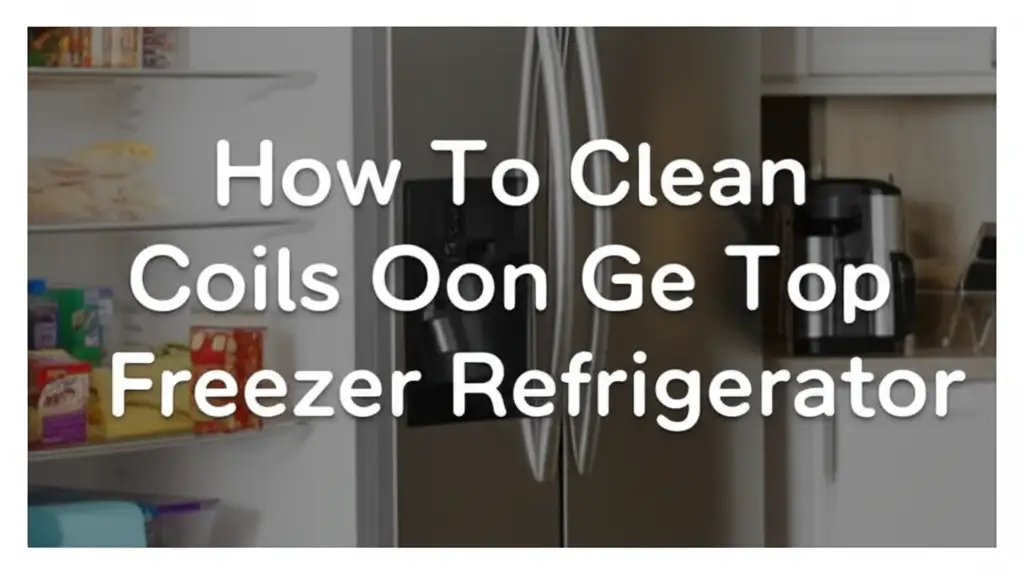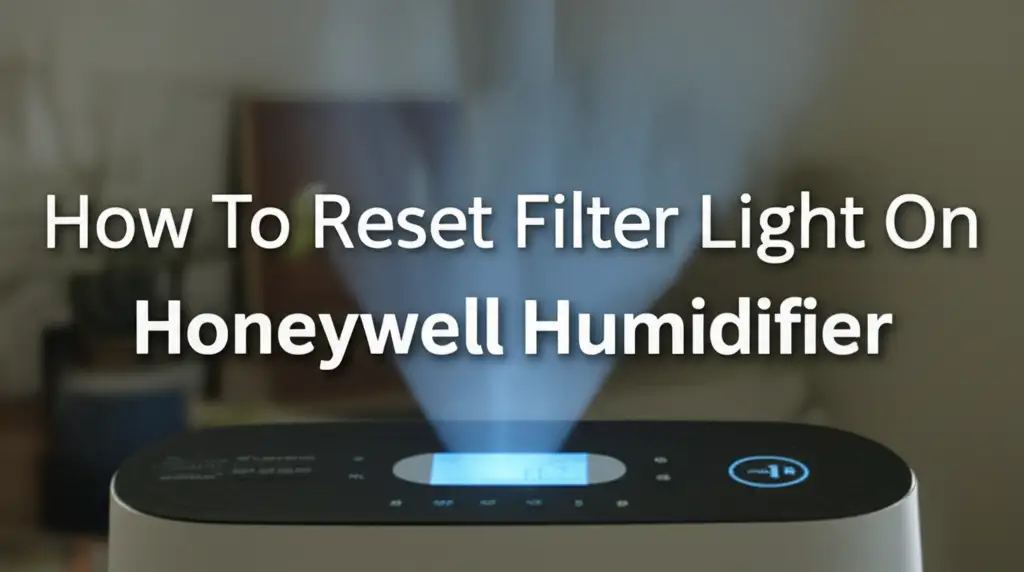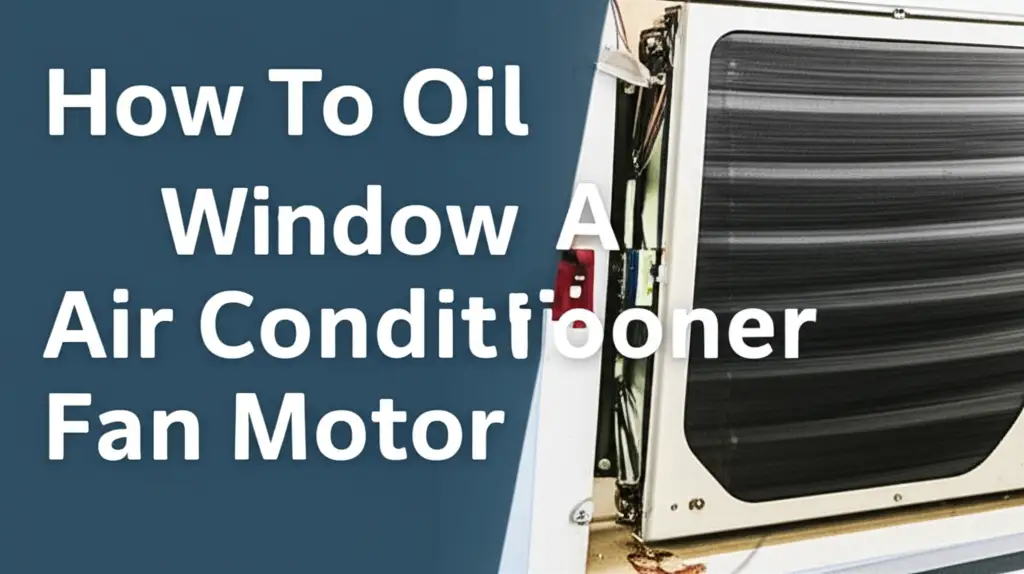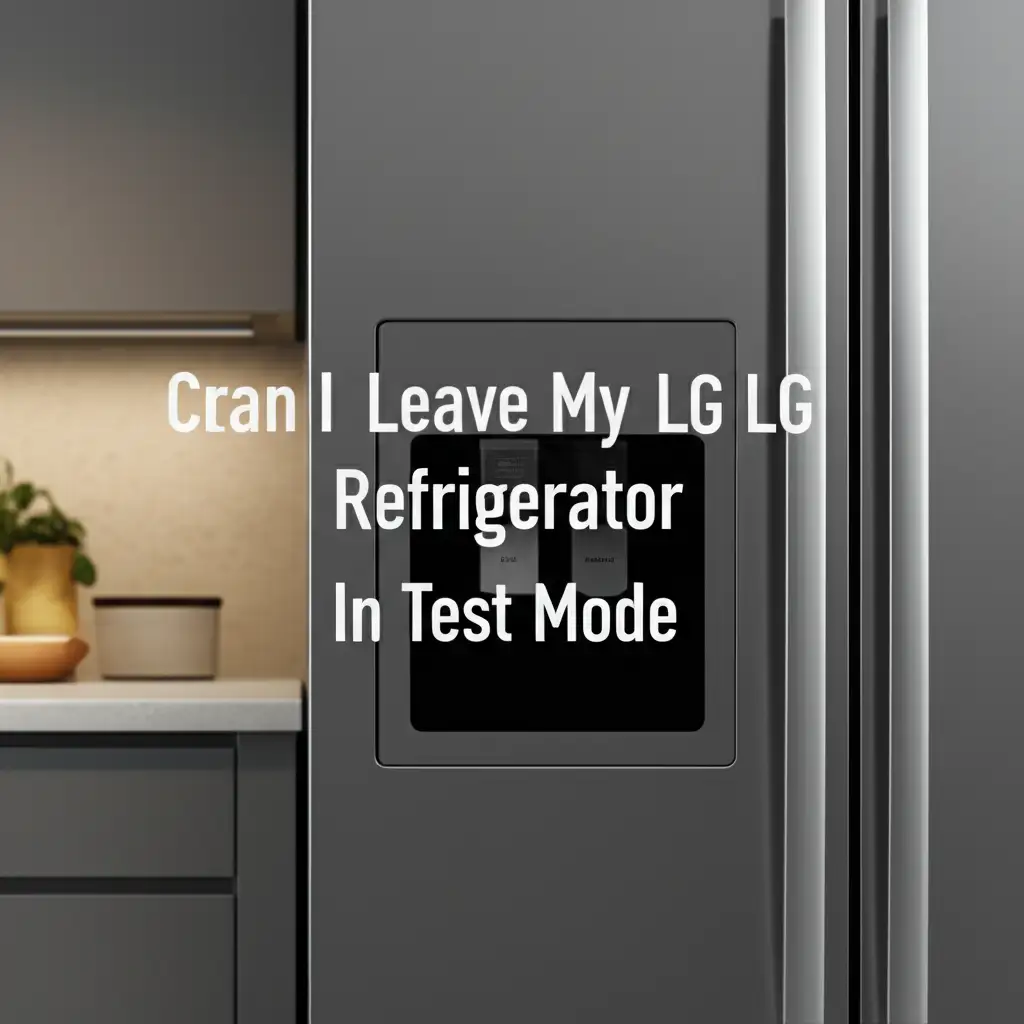· Todd Martin · Home Appliance Maintenance · 19 min read
How To Clean Coils On Ge Top Freezer Refrigerator

Boost GE Fridge Performance: Clean Coils Now
Your GE top freezer refrigerator works hard every day. It keeps your food fresh and drinks cold. Over time, dust and dirt build up on its coils. This buildup makes the fridge work harder. Cleaning these coils is important. It helps your refrigerator run well. This guide shows you how to clean coils on GE top freezer refrigerator models. We will cover finding the coils and the right tools. We will also give you clear, step-by-step instructions. Proper coil cleaning improves your fridge’s performance. It also saves you money on energy bills. Let us get started and give your fridge the care it needs.
Takeaway: Maintain Your GE Refrigerator by Cleaning Coils
- Regularly cleaning your GE top freezer refrigerator coils boosts efficiency.
- Dirty coils make your refrigerator work harder, using more energy.
- Coil cleaning helps prevent common cooling problems and extends appliance life.
- Locate condenser coils usually at the back or bottom, and evaporator coils in the freezer.
- Always unplug the refrigerator before you begin any cleaning.
Cleaning coils on a GE top freezer refrigerator involves safely locating the condenser coils, typically at the back or underneath, and using a vacuum and brush to remove accumulated dust and debris. This simple maintenance task significantly improves the appliance’s cooling efficiency and extends its operational lifespan, preventing common issues like poor cooling.
Why Cleaning GE Refrigerator Coils Matters
You might not think about your refrigerator’s coils often. However, they are vital parts of the cooling system. Dirty coils reduce how well your fridge cools. This makes your appliance work harder. Over time, this extra work can cause problems. Understanding why cleaning them is important can help you keep your GE top freezer refrigerator in top shape.
Imagine your refrigerator’s coils like lungs for your appliance. They need to breathe properly. When dust, pet hair, and other debris cover them, they cannot release heat efficiently. This means the compressor runs longer and more often. This leads to higher energy use and increased wear. Regular cleaning prevents these issues. It keeps your refrigerator running smoothly. This small task makes a big difference for your home and your wallet.
Improved Energy Efficiency
Dirty refrigerator coils are a leading cause of wasted energy. Your refrigerator uses a refrigerant to absorb heat from inside the unit. The coils, especially the condenser coils, release this heat into your kitchen. When dust acts like an insulating blanket on these coils, heat cannot escape easily. The compressor must work harder and longer to remove the heat.
This extra effort means your refrigerator uses more electricity. It pushes up your utility bills. Cleaning the coils removes this insulation. This allows your refrigerator to cool more efficiently. It brings down your energy consumption. You will notice the difference in your monthly statement. It is a simple way to save money.
Extended Refrigerator Lifespan
Appliances have a finite lifespan. Hard-working appliances tend to wear out faster. When your GE top freezer refrigerator’s compressor runs constantly due to dirty coils, it puts stress on the entire system. Components wear down more quickly. The compressor, which is often the most expensive part to replace, can fail prematurely.
Regular coil cleaning reduces this strain. It allows the compressor and other parts to operate under normal conditions. This reduces the risk of breakdowns. Your refrigerator will last longer with proper maintenance. This saves you from the cost and hassle of early replacement. Investing a little time now pays off later.
Better Cooling Performance
Have you noticed your GE top freezer refrigerator struggling to keep food cold? Or maybe the freezer is working fine, but the refrigerator section is warm? Dirty coils are often the culprit. When coils cannot dissipate heat effectively, the internal temperature of the fridge rises. This can spoil food faster.
Clean coils ensure that heat is removed quickly from the refrigerator. This allows the appliance to maintain its set temperature consistently. Your food stays fresh. Your drinks remain cold. This leads to better overall performance. If you are experiencing issues like why is my GE refrigerator not cooling but the freezer is working or why is my GE refrigerator warm but the freezer is cold, cleaning the coils is a great first step. It is often the simplest fix for cooling problems.
Identifying Coils on Your GE Top Freezer Refrigerator
Knowing where to find the coils is the first step in cleaning them. GE top freezer refrigerators typically have two main types of coils: condenser coils and evaporator coils. Each type serves a different purpose. They are located in different parts of the appliance. You usually clean the condenser coils more often. Understanding their locations helps you maintain your refrigerator properly.
Condenser coils are responsible for releasing heat. They are the coils that get dusty. Evaporator coils absorb heat from inside the fridge. These coils are inside the freezer compartment. They usually stay clean because of the cold environment. However, they can get frosted up. Knowing where each type of coil is ensures you clean the right ones for better efficiency.
Finding Condenser Coils
On most GE top freezer refrigerators, the condenser coils are located in one of two places. They can be at the back of the refrigerator. You will see a large black grid-like structure. They can also be underneath the refrigerator, behind a removable toe kick panel. This panel is usually at the bottom front.
To check the back, simply pull the refrigerator away from the wall. You will see the coils and the compressor unit. To check underneath, look for a grille or panel at the bottom front. This panel usually snaps off or has a few screws. Consult your owner’s manual if you are unsure. This ensures you find the correct location for your specific model. Learning how to clean refrigerator coils generally involves cleaning these condenser coils.
Locating Evaporator Coils
Evaporator coils are found inside the freezer compartment. They are usually hidden behind a back panel. This panel needs to be removed to access the coils. These coils absorb heat from the freezer and refrigerator sections. They are typically clean but can get covered in ice. This ice buildup can block airflow.
Accessing evaporator coils is more involved than condenser coils. You must empty the freezer. Then you must remove the back panel inside the freezer. This usually requires unscrewing it. If you suspect an issue with your freezer’s cooling, these coils might need attention. For general maintenance, focus on the condenser coils first. You can also learn more about how to clean freezer coils if you need to access these.
Essential Tools for GE Coil Cleaning
Before you start cleaning, gather all the necessary tools. Having the right equipment makes the job easier and safer. You do not need many specialized tools for this task. Most items are common household tools. Preparing everything beforehand saves you time and effort. It also ensures you can complete the job without interruptions.
Using the correct tools helps you clean effectively. It also protects your refrigerator from damage. Avoid using harsh chemicals or sharp objects. These can harm the coils or other components. Simple cleaning tools are often the best. Make sure your vacuum has a brush attachment. This helps loosen and remove stubborn dust.
Here is a list of tools you will need:
- Vacuum cleaner with hose and brush attachment: This is the primary tool for removing loose dust and debris.
- Coil cleaning brush: This long, thin brush is specifically designed to reach into tight spaces between the condenser coils. It helps dislodge caked-on dust.
- Soft cloth or rag: For wiping down surfaces and handling any spills.
- Screwdriver (Philips or flathead): Needed if your refrigerator has a screw-on back panel or toe kick panel.
- Flashlight: To help you see into dark, cramped areas around the coils.
- Gloves (optional): To keep your hands clean.
- Mask (optional): If you are sensitive to dust, a mask can prevent inhalation.
These tools will help you effectively clean the coils. They ensure a thorough job. Remember, safety always comes first. Make sure the refrigerator is unplugged before you begin.
Step-by-Step Guide to Clean GE Condenser Coils
Cleaning the condenser coils is the most important part of your GE top freezer refrigerator maintenance. This process is straightforward. It does not take long. Following these steps carefully ensures a proper and safe cleaning. Take your time with each step. This prevents accidental damage to your appliance.
This guide focuses on the condenser coils. These are the coils that accumulate the most dust. They are also the easiest to access. Regular cleaning of these coils will significantly improve your refrigerator’s performance. It also helps prevent common issues. You can typically find these coils at the bottom front or the back of your GE appliance. Knowing how to clean under a refrigerator is key for this task.
Prioritize Safety First
Safety is paramount before you begin any work on an electrical appliance. Electrical shock can cause serious injury. Always unplug your GE top freezer refrigerator from the wall outlet. Do this completely. Do not just turn off the power switch. Pull the plug directly from the wall.
Also, be careful when moving the refrigerator. Get help if you need it. Refrigerators are heavy. You do not want to strain your back. Once unplugged, you can proceed with cleaning. This ensures you are working in a safe environment. Never skip this crucial first step.
Clear the Area
Pull your refrigerator away from the wall. Give yourself enough space to work comfortably. You need to access the back or the bottom front of the unit. Remove any items stored on top of the refrigerator. Also, move any nearby obstacles. This creates a clear workspace.
If your coils are at the back, pull the fridge out far enough. This allows you to easily reach the entire coil assembly. If they are at the bottom front, remove the toe kick panel. This panel often just snaps off. Some models might have a few screws. Use your screwdriver if needed. Place the panel aside safely.
Vacuuming Dust and Debris
Now it is time to remove the loose dirt. Attach the brush attachment to your vacuum cleaner hose. Carefully vacuum the condenser coils. Get into all the nooks and crannies. The brush helps loosen dust. Vacuum all around the compressor and fan as well. These components also collect dust.
Be gentle. Do not bend or damage the delicate fins of the coils. Work slowly and thoroughly. You want to remove as much loose dust, dirt, and pet hair as possible. This initial vacuuming makes the next step easier. It also prevents dust from spreading. This is the most crucial part of [how to clean coils on GE top freezer refrigerator].
Using a Coil Brush
After vacuuming, use a specialized coil cleaning brush. This brush is long and flexible. It can reach deeper into the coil assembly. Slide the brush between the coil fins. Gently push and pull to dislodge any stuck-on dirt or lint. You will see more dust fall out.
Follow up with your vacuum cleaner again. Vacuum the loosened debris. Make sure to get all the dust that falls to the floor or inside the compartment. Repeat this process until the coils look clean. They should be free of thick dust layers. A clean coil surface is vital for heat dissipation.
Reassembly
Once the coils are clean, put everything back together. If you removed the toe kick panel, reattach it securely. Make sure it snaps back into place or that the screws are tightened. If you pulled the refrigerator out, gently push it back into its original position. Be careful not to pinch the power cord.
Finally, plug the refrigerator back into the wall outlet. You should notice an immediate improvement in how quietly and efficiently your GE top freezer refrigerator runs. This simple maintenance task makes a big difference. It completes the coil cleaning process.
Cleaning Evaporator Coils on GE Top Freezer Models
While condenser coils need regular cleaning, evaporator coils are a different story. These coils are inside your freezer compartment. They usually do not get dirty with household dust. Their main issue is ice buildup. If your freezer is not cooling well, or if you see excessive frost, the evaporator coils might be the problem. This section will guide you through how to address them.
Cleaning evaporator coils is a more involved process. It requires defrosting your freezer. This helps melt any ice that has formed on the coils. Accessing them also means disassembling part of the freezer interior. This is not a regular maintenance task like cleaning condenser coils. You only need to do it if you suspect a specific problem.
When to Clean Evaporator Coils
You do not need to clean evaporator coils as part of your routine maintenance. Only clean them if you observe specific symptoms. These symptoms include:
- Excessive frost buildup: If there is a thick layer of ice on the back wall of your freezer.
- Poor cooling in the freezer or refrigerator: Despite clean condenser coils and proper temperature settings.
- Unusual noises from the freezer: Such as a buzzing or fan hitting ice.
- Food spoiling quickly: If the freezer section is struggling to maintain freezing temperatures.
These signs indicate that the defrost system might not be working correctly. Or, the ice buildup is too severe. This prevents proper airflow over the evaporator coils. Addressing this issue will restore your refrigerator’s cooling efficiency.
Accessing Evaporator Coils
Accessing the evaporator coils requires some disassembly. First, you must unplug the refrigerator completely. Then, empty your freezer compartment. Remove all food items. Place them in a cooler with ice to keep them frozen. Remove all shelves and bins from the freezer.
Next, locate the access panel at the back of the freezer compartment. This panel usually covers the evaporator coils and fan. It is often held in place by screws. Use a screwdriver to carefully remove these screws. Gently pull the panel away. You will now see the evaporator coils. They will likely be covered in ice if you are experiencing problems.
Defrosting and Cleaning
If you find ice buildup, the best way to clean evaporator coils is to let them defrost. Leave the freezer door open for several hours. Place towels on the freezer floor to catch melting ice. You can also use a hairdryer on a low, cool setting to speed up the process. Do not use sharp objects to chip away ice. This can damage the coils.
Once the ice has melted, inspect the coils. They should be clean of debris, as dust does not typically accumulate here. If there is any mold or residue, gently wipe it with a damp cloth. Make sure the coils are completely dry before reassembling. Reattach the access panel. Replace shelves and food items. Plug the refrigerator back in. This process helps resolve issues caused by excessive ice.
Maintenance Schedule for GE Refrigerator Coils
Maintaining your GE top freezer refrigerator’s coils is an ongoing task. It ensures optimal performance and longevity. Establishing a regular cleaning schedule is key. This prevents major dirt buildup. It also helps you catch potential issues early. Knowing how often to clean them depends on your home environment.
Different factors can affect how quickly coils get dirty. Pet owners might need to clean more often. Homes in dusty environments also require more frequent cleaning. Being proactive saves you from costly repairs down the line. It keeps your appliance running efficiently for years.
How Often to Clean Condenser Coils
For most households, cleaning the condenser coils every 6 to 12 months is sufficient. This ensures they do not accumulate too much dust. However, adjust this frequency based on your living conditions:
- Homes with pets: If you have dogs or cats, pet hair can quickly clog coils. Aim to clean every 3 to 6 months.
- Dusty environments: If you live near construction, or in a naturally dusty area, clean every 4 to 6 months.
- Large families/high usage: A heavily used refrigerator works harder. Consider cleaning every 6 months.
- Clean homes with no pets: You might get away with cleaning once a year.
Pay attention to your refrigerator’s performance. If it starts running more often, or if you feel heat coming from the coils, it might be time for a cleaning. A consistent schedule is beneficial.
Signs of Needing Cleaning
Your GE top freezer refrigerator will often tell you when its coils need attention. Look out for these signs:
- Increased energy bills: If your electricity bill goes up without a change in usage.
- Refrigerator running constantly: The compressor seems to run non-stop or for very long cycles.
- Warm refrigerator compartment: The freezer is cold, but the fresh food section feels warm.
- Visible dust on coils: A simple visual check of the coils behind or under the fridge reveals a thick layer of dust.
- Noises: The compressor might sound louder or more strained.
Addressing these signs promptly can prevent further problems. It helps maintain the cooling efficiency. These are clear indicators that it is time to clean your coils.
Troubleshooting Common Coil Cleaning Issues
Even after cleaning your coils, you might encounter issues. Sometimes, cleaning alone does not solve every problem. Or, you might face challenges during the cleaning process itself. This section addresses common troubleshooting scenarios. It helps you identify other potential problems. It also guides you on what to do if your refrigerator is still not performing optimally.
Understanding these issues can prevent unnecessary frustration. It helps you decide if you need professional help. Not every problem is coil-related. But ruling out dirty coils is always a good start. This approach helps you tackle the issue methodically.
What if it’s Still Not Working?
If you have cleaned the coils on your GE top freezer refrigerator and it is still not cooling properly, other issues might be at play. Dirty coils are a common cause, but not the only one. Consider these possibilities:
- Defrost System Malfunction: The defrost heater or thermostat might be faulty. This leads to ice buildup on evaporator coils, even after a manual defrost.
- Evaporator Fan Motor Failure: If the evaporator fan motor in the freezer is not working, cold air cannot circulate to the fresh food compartment. You might hear no fan noise or unusual sounds from the freezer.
- Condenser Fan Motor Failure: If the condenser fan (usually near the compressor and condenser coils) is not running, heat cannot dissipate. This makes the compressor overheat.
- Faulty Compressor: The compressor is the heart of the cooling system. If it fails, the refrigerator will not cool at all.
- Refrigerant Leak: A leak in the sealed system will prevent cooling. This requires professional repair.
For issues beyond dirty coils, especially with fan motors or sealed systems, it is best to consult a qualified appliance technician. They have the tools and expertise to diagnose and repair complex problems.
Common Coil Cleaning Mistakes
Avoid these mistakes when cleaning your GE refrigerator coils:
- Not unplugging the refrigerator: This is a serious safety hazard. Always disconnect power completely.
- Using water directly on coils: Water can cause electrical shorts or rust. Only use a dry vacuum and brush.
- Bending or damaging coil fins: The fins are delicate. Use gentle pressure with your vacuum attachment and coil brush. Bent fins can restrict airflow and reduce efficiency.
- Not cleaning thoroughly: Skipping spots or doing a quick, superficial clean will not give you the full benefits. Take your time.
- Forgetting the fan and compressor area: These components also gather dust. Clean around them for optimal performance.
- Not checking all coil locations: Remember to check both the back and bottom front if unsure where your condenser coils are.
Avoiding these common errors ensures a safe and effective cleaning. It helps your GE top freezer refrigerator perform its best.
FAQ Section
How often should I clean my GE refrigerator coils?
Clean the condenser coils on your GE top freezer refrigerator at least once every 6 to 12 months. If you have pets, live in a dusty environment, or notice your fridge working harder, consider cleaning them every 3 to 6 months. Regular cleaning maintains efficiency and prevents issues.
What happens if I don’t clean my refrigerator coils?
If you do not clean your refrigerator coils, dust and debris will build up. This buildup acts as insulation, making the refrigerator work harder to cool. This increases energy consumption, raises your utility bills, and shortens the lifespan of your appliance. It also leads to poor cooling performance.
Can dirty coils damage my GE refrigerator?
Yes, dirty coils can indirectly damage your GE refrigerator. The extra strain on the compressor due to dirty coils can lead to its premature failure. This is often the most expensive component to replace. Dirty coils also reduce overall efficiency, putting more stress on the entire cooling system.
Where are the coils on a GE top freezer refrigerator located?
On most GE top freezer refrigerators, the condenser coils are located at the back of the appliance or underneath, behind a removable toe kick panel at the front bottom. Evaporator coils are found inside the freezer compartment, typically behind a back access panel.
Do all GE refrigerators have accessible coils?
Most GE refrigerators, including top freezer models, have accessible condenser coils for cleaning. They are usually either exposed at the back or behind a removable toe kick panel at the bottom front. Evaporator coils are also accessible but require removing an internal freezer panel.
Can I use water to clean refrigerator coils?
No, you should not use water to clean refrigerator coils, especially condenser coils. Water can cause rust on metal parts and create an electrical hazard if it comes into contact with wiring or electrical components. Always use a dry vacuum cleaner and a coil brush for cleaning.
Conclusion
Cleaning the coils on your GE top freezer refrigerator is a small task with big rewards. It extends the life of your appliance. It also significantly lowers your energy bills. Plus, it ensures your food stays perfectly cold. You now have the knowledge and steps to perform this vital maintenance.
Remember to always prioritize safety by unplugging the refrigerator. Take your time to thoroughly vacuum and brush the condenser coils. If you encounter issues with ice buildup in the freezer, consider addressing the evaporator coils. Make coil cleaning a regular part of your home maintenance routine. Your GE refrigerator will thank you with years of efficient, reliable cooling. Keep your appliance running like new and enjoy the benefits of a well-maintained home.
- GE Refrigerator
- Coil Cleaning
- Refrigerator Maintenance
- Top Freezer
- Appliance Care
- Energy Efficiency
- DIY Repair





